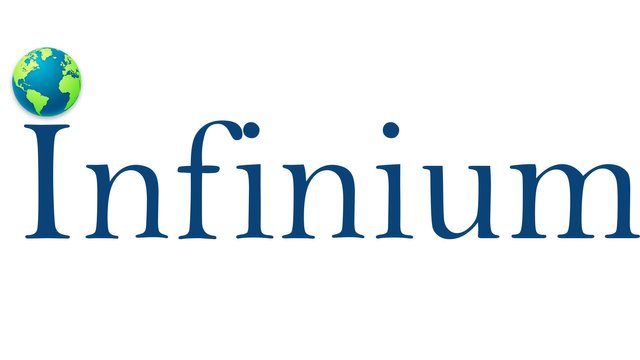
Introduction
The oleochemicals market, encompassing chemicals derived from natural fats and oils, plays a crucial role in various industries, including personal care, automotive, pharmaceuticals, and food processing. Oleochemicals, which include fatty acids, glycerol, and surfactants, are prized for their renewable nature and versatile applications. As industries increasingly seek sustainable and environmentally friendly alternatives to petrochemical-based products, oleochemicals are gaining prominence. This market is driven by technological advancements, growing consumer awareness of sustainability, and expanding industrial applications, making it a dynamic sector with substantial growth potential.
Market Dynamics
Drivers:
Rising Demand for Sustainable Products: The shift towards sustainability and green chemistry is driving demand for oleochemicals as they are derived from renewable resources and offer a more eco-friendly alternative to petrochemicals. This trend is particularly strong in the personal care, automotive, and cleaning products industries.
Technological Advancements: Innovations in oleochemical processing and applications are expanding their use across various industries. Advances in production technologies, such as improved catalysts and efficient extraction methods, enhance the performance and cost-effectiveness of oleochemicals.
Growing Awareness of Environmental Impact: Increasing consumer and regulatory pressure to reduce environmental impact is promoting the adoption of oleochemicals. As companies and consumers become more conscious of their environmental footprint, the demand for biodegradable and non-toxic alternatives to synthetic chemicals is rising.
Challenges:
Volatility in Raw Material Prices: The prices of raw materials, such as vegetable oils and animal fats, are subject to fluctuations due to factors like weather conditions, agricultural policies, and global market trends. These price variations can affect the cost structure and profitability of oleochemical producers.
Competition from Petrochemicals: Despite the advantages of oleochemicals, petrochemicals still dominate many markets due to their lower cost and established infrastructure. Competing with petrochemical products requires ongoing innovation and cost management.
Regulatory Compliance: The oleochemical industry faces regulatory challenges related to product safety, environmental impact, and labeling requirements. Compliance with diverse and evolving regulations across different regions can be complex and costly.
Opportunities:
Expansion in Emerging Markets: Growing industrialization and increasing consumer awareness in emerging markets, particularly in Asia-Pacific and Latin America, offer significant growth opportunities for oleochemicals. These regions are expanding their use of oleochemicals in personal care, agriculture, and other sectors.
Innovation in Product Applications: There is an opportunity to develop new oleochemical applications and formulations that address emerging market needs. Innovations in areas such as bio-based polymers, specialty surfactants, and high-performance lubricants can drive market growth.
Sample Pages of Report: https://www.infiniumglobalresearch.com/reports/sample-request/1026
Regional Analysis
North America: The North American market is characterized by a strong focus on sustainability and innovation. The U.S. and Canada are key markets, driven by advancements in technology and increasing adoption of renewable chemicals in various industries.
Europe: Europe has a well-established market for oleochemicals, with a strong emphasis on environmental regulations and sustainability. The European Union's strict environmental policies and consumer demand for green products drive the growth of the oleochemicals sector.
Asia-Pacific: The Asia-Pacific region is experiencing rapid growth in the oleochemicals market, fueled by industrial expansion, rising disposable incomes, and increasing awareness of sustainable products. Countries like China, India, and Indonesia are major contributors to this growth.
Latin America & Middle East & Africa: These regions are gradually increasing their use of oleochemicals due to growing industrial activities and a rising focus on sustainability. Market development in these areas is driven by expanding manufacturing sectors and changing consumer preferences.
Market Segmentation
By Type: The oleochemicals market is segmented into fatty acids, glycerol, surfactants, and others. Fatty acids and surfactants are major segments due to their widespread use in various applications.
By Application: Key applications include personal care (soaps, shampoos), automotive (lubricants, additives), pharmaceuticals, food processing, and industrial (cleaning agents, coatings). Personal care and automotive applications are prominent due to their high demand for sustainable and performance-enhancing ingredients.
By Source: Oleochemicals are derived from vegetable oils (palm, soybean, coconut) and animal fats. Each source offers different properties and applications, influencing market dynamics and product development.
By Region: Regional segmentation includes North America, Europe, Asia-Pacific, Latin America, and the Middle East & Africa, with each region having distinct growth drivers and market characteristics.
Competitive Landscape
Market Share of Large Players: Major players in the oleochemicals market, such as Cargill, BASF SE, and Wilmar International, hold significant market share due to their extensive production capacities, global reach, and established market presence.
Price Control by Big Players: Large companies often influence market pricing through economies of scale and strategic sourcing. They can set trends and standards for pricing, impacting the competitive landscape and market dynamics.
Challenges from Smaller Companies: Small and mid-sized companies challenge larger players by focusing on niche markets, innovative products, and cost-effective solutions. They often introduce specialized oleochemicals that cater to specific applications or emerging trends.
Key Players:
Cargill, Incorporated
BASF SE
Wilmar International
Kraton Corporation
SABIC
Dow Inc.
Evonik Industries AG
Report Overview: https://www.infiniumglobalresearch.com/reports/global-oleochemicals-market
Future Outlook
New Product Development: Continuous innovation in oleochemical formulations and applications is essential for staying competitive. Developing new products with enhanced performance, sustainability, and functionality helps companies meet evolving market demands and capture new opportunities.
Sustainable Products: The growing emphasis on environmental sustainability is driving demand for eco-friendly oleochemicals. Companies that focus on sustainable sourcing, production processes, and product development will likely appeal to environmentally conscious consumers and strengthen their market position.
Conclusion
The oleochemicals market is poised for growth driven by advancements in technology, increasing demand for sustainable products, and expanding industrial applications. While challenges such as raw material price volatility and regulatory compliance persist, opportunities exist in emerging markets and innovative product development. Companies that embrace sustainability and innovation will be well-positioned to capitalize on the evolving market dynamics and achieve long-term success.